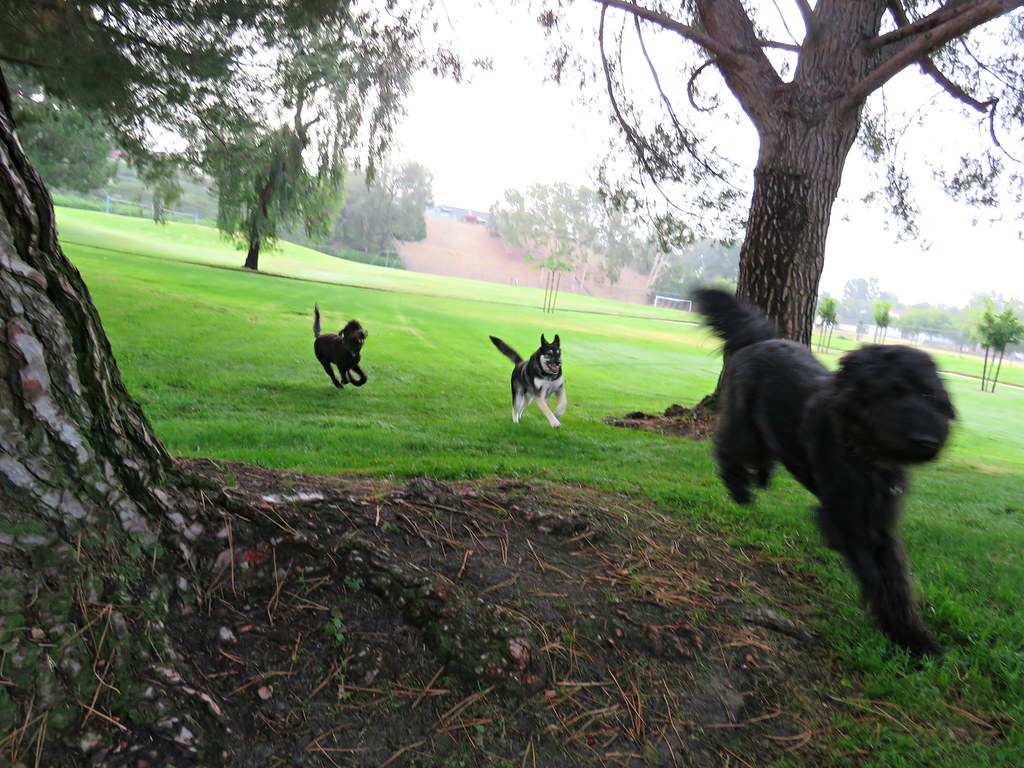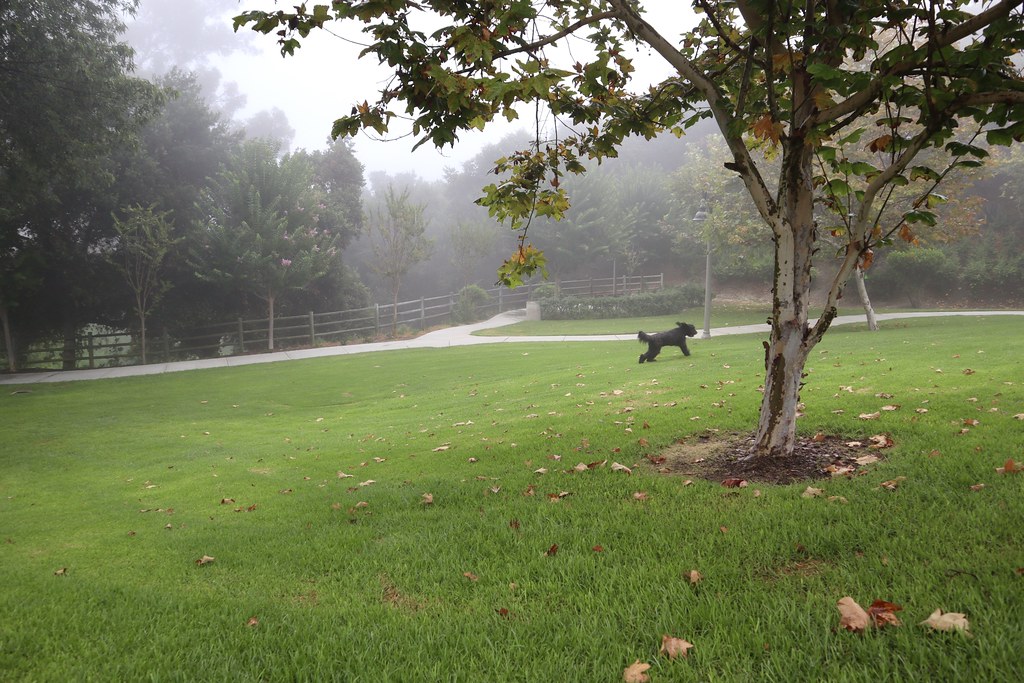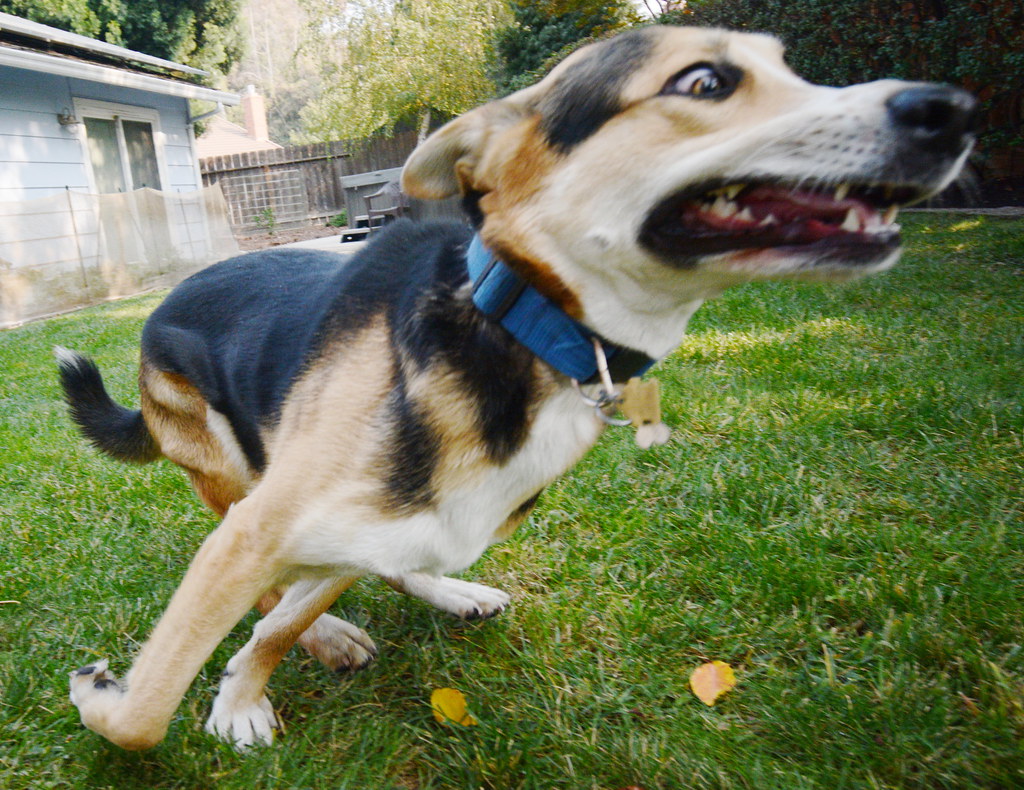Why do dogs get the zoomies?
Does your dog suddenly dash around the house like a furry whirlwind, leaving you wondering, “What just happened?” If yes, then you’ve witnessed the zoomies—a behavior pet parents affectionately describe as their dog’s signature high-speed antics. Officially known as “Frenetic Random Activity Periods” (or FRAPs), zoomies are one of the most joyous and entertaining aspects of owning a dog.
But what causes dogs to zoom around like this? Is it just good fun, or is there something your pup is trying to tell you? Keep reading to learn why dogs get the zoomies, how to keep them safe during their wild bursts of energy, and how you can manage this behavior if it becomes a bit too chaotic.

What Are Zoomies, and Why Do Dogs Get Them?
Zoomies aren’t just random; they’re your dog’s way of alleviating pent-up energy or stress. They can happen to puppies, adult dogs, and even older dogs, but younger and high-energy breeds are especially prone to these sudden bursts of activity.
Does Breed Play a Role in Zoomies?
While zoomies can occur in dogs of all breeds, there are some differences in how frequently or intensely they might occur based on a dog’s breed. High-energy breeds such as Border Collies, Jack Russell Terriers, and Australian Shepherds are more likely to have frequent episodes of zoomies due to their natural energy levels and need for mental and physical stimulation.
On the other hand, more laid-back breeds like Bulldogs or Basset Hounds might experience zoomies less often, though they can still exhibit bursts of energy from time to time. It’s essential to remember that zoomies are an individual behavior, and personality and lifestyle also play a significant role, regardless of breed. Providing your dog with sufficient exercise, both physical and mental, can help ensure these energy bursts remain a playful and manageable part of their routine.
What Triggers the Zoomies?
Dogs tend to start zooming when they experience excitement, stress release, or pure happiness. Here are some common scenarios that trigger dog zoomies:
Bath Time Freedom
Ever notice a wet, freshly bathed dog zooming the second they’re out of the tub? Bath time can be a stressful experience for many dogs, and zoomies allow them to alleviate stress and nervous energy.
Post-Meal Energy
A full meal can lead to a happy dog letting off steam with a quick dash around the house, particularly for puppies and younger dogs with more energy.
After a Play Session
Sometimes zoomies follow a high-arousal activity like playing fetch or chasing other dogs, as excess energy spills over in the form of joyful sprinting.
Periods of Boredom
When dogs don’t get enough physical activity or mental stimulation, they may perform the zoomies to release pent-up energy they’ve been accumulating throughout the day.
Reconnecting with You
Your dog might break out into a zooming frenzy as you return home after a long workday. It’s their ultimate expression of excitement and connection.
Is There an Exact Cause for the Zoomies?
While we can pinpoint the triggers, there’s no exact cause other than that zoomies are a natural, instinctive response. It’s a combination of physical energy release and emotional expression. Many dogs seem to be communicating their sheer joy, so when in doubt, think of zoomies as an authentic, gleeful “I’m so happy right now!”

Tips to Keep Your Zooming Dog Safe
Your pup’s zooming episodes are usually harmless and a great way for them to exercise. However, if you’re not careful, zoomies happening in the wrong place—like small spaces with slick surfaces—can lead to accidents.
1. Create a Safe Zoomie Zone
- Always watch for FRAPs in areas filled with breakable items like vases, plants, or lamps.
- Avoid letting your dog run on slick surfaces, including hardwood floors and tiles. These increase the chances of slipping injuries.
If your dog is indoors, move breakable items out of the way and keep an eye on nearby small children or elderly family members who could accidentally be knocked over. Outdoor zoomies are better suited for a fenced yard or an enclosed space to ensure your pet doesn’t bolt somewhere unsafe.
2. Supervise Play with Other Dogs
If FRAPs take place during play with other dogs, keep their play session in check. Overexcited dogs might accidentally harm one another by jumping or colliding too hard.
3. Be Mindful of Exhaustion
While zoomies are fun to watch, it’s essential to ensure your dog doesn’t overexert themselves. Puppies and older dogs may have more energy limits than young adults, so be cautious if they’re already tired.
4. Schedule Enough Exercise
Dogs zoom when they have excess energy to burn. Regular walks, ample exercise, and mental stimulation like training or puzzle toys can reduce the frequency and intensity of these wild activity bursts.
Creating a balance of physical activity and quiet relaxation can keep a zooming dog or puppy in check while providing overall better behavior.
Zoomies in Puppies, Adult Dogs, and Beyond
Many pet parents associate FRAPs with puppies, often calling them “puppy zoomies.” It’s true—puppies are full of infectious energy, and zoomies are a common way for them to engage in physical activity and explore boundaries with their environment.
However, even adult dogs and older dogs sometimes get the zoomies. While these episodes may be less frequent or intense than a younger dog’s, they’re still a healthy and natural expression of happiness and relief.
For older dogs experiencing zooming episodes, watch carefully for signs of strain or discomfort, as these could indicate underlying joint or mobility issues rather than good, harmless fun.

Snouts and Stouts Indoor Dog Park and Bar: The Perfect Place for Zoomies!
If you’re looking for a fun and safe environment where your dog can burn off their zoomie energy, look no further than Snouts and Stouts Indoor Dog Park and Bar. This unique space provides a secure, climate-controlled area where dogs of all sizes can run, jump, and play to their heart’s content.
The park is equipped with features designed to engage your dog’s natural energy, ensuring they get the physical exercise and mental stimulation they crave. Meanwhile, you can relax and enjoy a variety of beverages from the fully stocked bar, making it a great experience for both you and your canine companion. Snouts and Stouts is the perfect spot to manage your dog’s energy bursts in a safe and social environment, all while connecting with other dog lovers in the community!
How to Encourage or Manage the Zoomies
If your goal is to have a happy dog that zooms safely, try these tips:
- Visit a Dog Park: Most dogs get a kick out of running free in wide, open spaces. This can happen naturally during dog meetups.
- Playtime with Other Dogs: Scheduling interactive opportunities with other dogs can promote zoomies in a controlled, social environment.
- Mental Stimulation: Games and training sessions can trigger zoomies in high-arousal pets, giving them quick and effective stress relief.
Interested in Reducing the Zoomies?
If zoomies are happening too often or in unsafe environments, your dog might need outlets for pent-up energy. Incorporate activities like:
- More Exercise: Add an extra walk to your daily routine or increase the intensity of play sessions.
- Training Sessions: These can help teach obedience while mentally stimulating your pup.
- Interactive Toys: Mental challenges like treat puzzles can reduce energy that might otherwise lead to zooming.
FAQ About Dog Zoomies
What are dog zoomies?
Dog zoomies, formally known as Frenetic Random Activity Periods (FRAPs), are sudden bursts of energy that many dogs experience. During these episodes, dogs may run in circles, sprint back and forth, or display playful and hyperactive behavior for no apparent reason.
Why do dogs get zoomies?
Dogs often get zoomies as a way to release pent-up energy or excitement. These bursts can happen after a bath, during playtime, or even after being cooped up for an extended period. Zoomies are a natural and normal part of canine behavior.
Are zoomies a sign of a problem?
No, zoomies are generally harmless and not a sign of any underlying health problem. However, if your dog’s zoomies seem excessive or are paired with unusual behavior, it may be worth consulting a veterinarian.
How can I safely manage my dog’s zoomies?
Providing regular exercise, both physical and mental, can help reduce the frequency and intensity of zoomies. Creating a safe, open space where your dog can run freely without obstacles or hazards is essential. Facilities like Snouts and Stouts Indoor Dog Park are perfect for this purpose.
Can older dogs get zoomies?
Yes, while zoomies are more common in puppies and younger dogs, older dogs can still experience them from time to time. Even senior dogs enjoy occasional bursts of energy!.
Helpful Resources and Links
- American Kennel Club Why Does My Puppy Go Wild At Night? Learn more about the science behind zoomies and how to handle them safely.
- ASPCA – Enrichment for Dogs Discover creative ways to provide mental and physical stimulation for your dog to keep zoomies under control.
- Snouts and Stouts Indoor Dog Park Explore this safe, indoor facility where your dog can run freely and play without any hazards.
- PetMD – How To Calm A Hyperactive Dog Find tips on managing and directing your dog’s energy levels effectively.
- The Spruce Pets – Exercising Your Dog A guide to keeping your dog active and healthy with a variety of exercise routines.
- Preventive Vet – Tips for Dog Safety Indoors and Outdoors Ensure your home and outdoor areas are safe for your dog during bouts of zoomies.
Celebrate the Joy of Zoomies | Why Do Dogs Get The Zoomies?
Zoomies are one of those quirky behaviors that make dogs so lovable—it’s their way of sharing uncontained joy and excitement with their favorite humans. While it might not always feel convenient (especially when your furry friend starts zooming in the house near breakable items), it’s important to view zoomies for what they are—a healthy and natural outlet for excess energy.
By keeping your zooming dog safe, balancing exercise, and appreciating the sheer joy of a happy dog, you can ensure this adorable behavior remains a cherished part of your life together.
Whether you’re a new pet parent or an experienced dog owner, watching your pup zip around lets you know just how much fun they’re having. And isn’t that what we all want for our four-legged family members?




